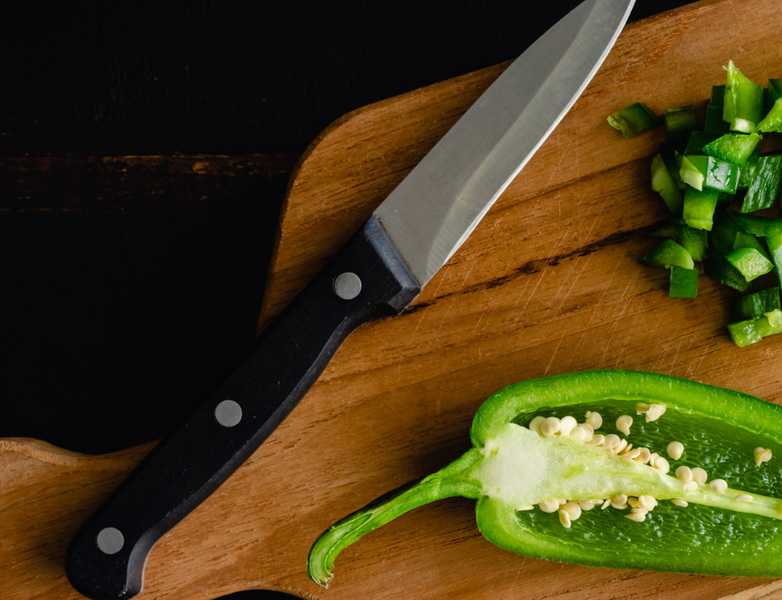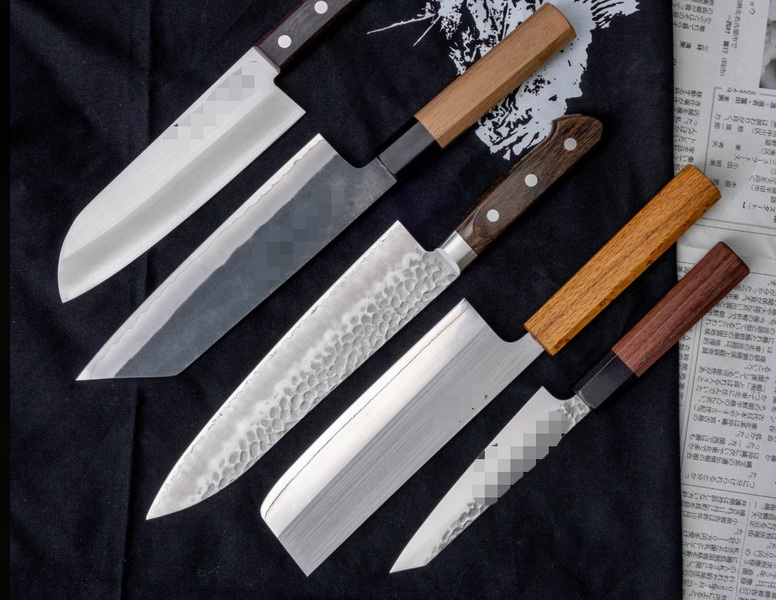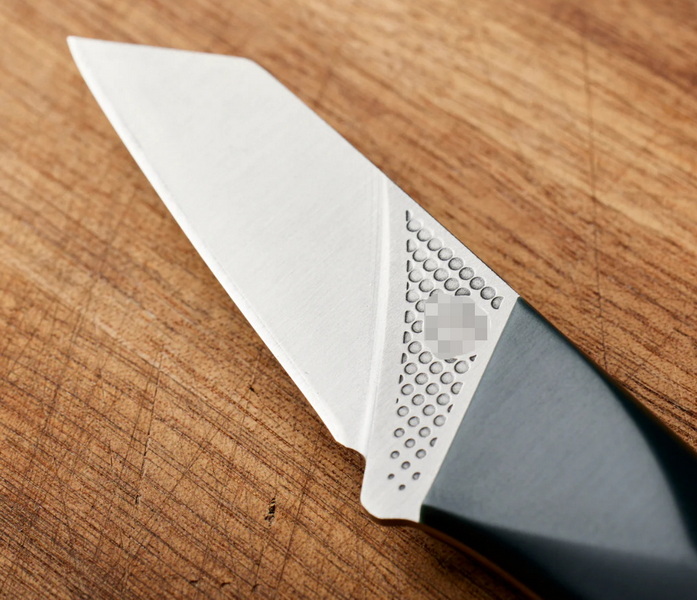- All
- Product Name
- Product Keyword
- Product Model
- Product Summary
- Product Description
- Multi Field Search
Views: 222 Author: Ann Publish Time: 2025-10-26 Origin: Site











Content Menu
● Product Overview: Paring Knife Essentials
● Manufacturing and OEM Considerations
● Designing for Commercial Use
● Paring Knife Use-Cases in a Culinary Business
● Vendor Evaluation and Sourcing Strategies
● Costing and Value Proposition
● Quality Assurance and Compliance
● Maintenance, Sharpening, and Longevity
● Marketing and Product Positioning
● Engineering and R&D Considerations
● Case Studies and Applications
● Environmental and Ethical Considerations
● FAQ
>> 1. What is the most important factor when choosing a Paring Knife for a culinary business?
>> 2. How does blade grind affect performance for a Paring Knife?
>> 3. Which handle materials are best for high-volume kitchens?
>> 4. How should Paring Knife be maintained to maximize longevity?
>> 5. What are the advantages of private labeling Paring Knives for international markets?
In professional kitchens and culinary businesses, a paring knife is an indispensable tool for delicate tasks such as trimming, peeling, sectioning fruits, and intricate garnish work. For OEM manufacturers serving foreign brands, selecting the right paring knife involves balancing blade geometry, material science, handle ergonomics, manufacturing processes, and after-sales support. This guide helps culinary business buyers and OEM partners evaluate options to choose a paring knife that delivers consistent performance, durability, and brand differentiation.

- What makes a paring knife unique
- Common blade materials: high-carbon stainless steel, VG-10, 420J2, and Damascus-inspired blends
- Blade shapes: pointed tip, curved edge, spear point variants
- Handle options: G-10, pakkawood, ABS with stainless steel liners
- Blade thickness versus flexibility: impact on precision tasks
- Tolerances in manufacturing and how they affect consistency across batches
Material choice affects edge retention, corrosion resistance, and maintenance.
- Stainless steel alloys for ease of sanitation and durability
- High-carbon options for sharper edges and longer edge life
- Damask-inspired patterns for branding and premium positioning
- Heat treatment and tempering as critical levers for performance
- The role of microstructure in wear resistance and cutting performance
- Corrosion resistance in humid or salty kitchen environments
- Forged vs stamped blades: durability, balance, and tactile feedback
- Heat treatment profiles to achieve hardness (HRC ranges) and toughness
- Edge geometry and grind types: flat, hollow, or V-grind; edge retention vs ease of sharpening
- Blade strengthening features: full tang, bolster design, and spine thickness
- Handle assembly methods and ergonomics; material bonding and long-term stability
- Quality control checkpoints: blade-to-handle fit, tang security, finish quality
- Process automation: stamping lines, laser engraving, and color customization
- Packaging and branding options: laser engraving, private labeling, color-coding
- Sustainability considerations: raw material sourcing, waste minimization, and recycling programs
- Ergonomics for long-duration tasks; grip contour, weight distribution, and balance point
- Size ranges and weight distribution for professional users
- Knife block compatibility and storage considerations
- Corrosion resistance and sanitation standards in commercial environments
- Packaging that communicates OEM capabilities and certifications
- Color-coding and labeling for batch traceability and QA
- Fruit and vegetable preparation; precision peeling and coring
- Peeling, trimming, deseeding, and detailed carving
- Garnish creation and intricate plate presentation
- Training and skill development for staff using high-quality paring knives
- Compliance with safety and handling guidelines in professional kitchens
- Workflow integration: from prep line to pass through sanitation steps
- Assessing supplier credibility and OEM capabilities
- Regional factor considerations: North America, Europe, Asia-Pacific markets
- Sample testing protocols for edge retention, comfort, and balance
- Comparative testing: retention tests, corrosion resistance, and edge stability
- After-sales support, warranty, and replacement policies
- Intellectual property protection and private-label branding agreements
- Risk management: supply continuity, currency exposure, and lead-time optimization

- Total cost of ownership including maintenance, sharpening needs, and replacement cycles
- Value differentiation through blade geometry, edge retention, and ergonomic handles
- Branding opportunities with private label paring knives
- Packaging design as a marketing tool for retailers and distributors
- Lifecycle cost planning: replacement strategies aligned with kitchen usage patterns
- Regional pricing strategies and import/export considerations
- Certifications relevant to global markets (FDA, LFGB where applicable)
- Material traceability and supplier audits
- Safety testing for blades and handles
- Documentation for OEM partnerships
- Pilot runs, tolerance verification, and fatiguing tests to simulate long-term use
- Non-destructive testing methods for blade integrity
- Recommended sharpening approaches for paring knives; stones vs ceramic rods
- Proper cleaning and drying procedures to prevent corrosion
- Storage solutions to prevent blade damage; magnetic bars vs sheaths
- Resharpening frequency estimates for professional use
- Maintenance kits and instructional content for end-users
- Keyword optimization with emphasis on Paring Knife and OEM
- Visual storytelling: images and videos showcasing precision work
- Product bundles and gift packaging ideas for retailers
- Educational content that supports retailer and brand storytelling
- Market-specific messaging: translating technical benefits into practical outcomes
- Regulatory messaging: safety, hygiene, and compliance as marketing claims
- Material science collaboration with steel mills to tailor alloys
- Custom grind profiles for OEM clients with unique application requirements
- Prototyping cycles, metallurgical analysis, and iterative testing
- Long-term durability studies: edge retention under repeated use
- Customization pathways: logo placement, packaging aesthetics, and certification marks
- Sourcing from multiple regions to mitigate disruptions
- Packaging optimization for shipping efficiency
- Inventory management: MOQ strategies and demand forecasting
- Compliance with international shipping and labeling regulations
- Sustainability in logistics: eco-friendly packaging and carbon footprint awareness
- Training modules for retailers and kitchen staff on usage and care
- Digital manuals with step-by-step care instructions
- Certification programs for OEM partners and distributors
- Certification badges on packaging to communicate quality stages
- Case study: OEM paring knife line for a European hospitality brand
- Case study: Private-label paring knives for a North American distributor
- Case study: Custom ergonomic handle design for a high-volume kitchen chain
- Case study: Sanitation-compliant packaging and labeling for FDA-regulated markets
- Pre-production checks: material confirmation, dimensional accuracy
- In-process checks: grind consistency, edge uniformity, handle fit
- Post-production checks: final inspection, packaging integrity
- Sampling plans: AQL levels, batch traceability, and acceptance criteria
- Non-conformance management: corrective action plans and root-cause analysis
- Responsible sourcing and supplier audits
- Worker safety and fair labor practices
- Waste reduction and end-of-life product guidelines
- Transparent supply chain disclosures
Selecting the right paring knife for a culinary business requires a holistic view that covers material science, manufacturing precision, ergonomic design, and robust OEM capabilities. A high-quality paring knife enhances precision, reduces fatigue, and elevates brand perception in foreign markets. By collaborating with a reliable OEM partner, you can customize blade materials, handle aesthetics, packaging, and certification packages to meet regional requirements and retailer expectations. The end result is a private-label paring knife program that delivers consistent performance, scalable production, and strong after-sales support across global markets.

Answer: Blade material and edge retention are usually the most crucial factors, followed by the durability of the handle and ergonomics, as well as the OEM capabilities and after-sales service of the manufacturer. When making a choice, one should balance the hardness of the blade, corrosion resistance, ease of maintenance, and the ability for batch customization.
Answer: Different types of grinding (flat grinding, cylindrical grinding, V-shaped grinding) affect the sharpness, ease of grinding, and control during detailed tasks. Cylindrical grinding and V-shaped grinding tend to maintain a sharp edge better during the initial cutting process, but require more frequent maintenance over time.
Answer: Materials that are durable and easy to clean, such as G-10, Pakkawood, and ABS with stainless steel liners, perform well in high-volume operations. They typically offer good grip, resistance to deformation, and water resistance.
Answer: Keep dry, sharpen regularly, avoid prolonged immersion in water, and store in a suitable knife holder or magnetic knife strip. Perform periodic maintenance using a suitable sharpening stone or sharpening rod, and avoid using high-hardness treatments that could cause cracking.
Answer: Private labels can enhance brand recognition, achieve regional compliance for packaging and labels, improve consistency in after-sales services, and enhance market differentiation and premium capabilities through customized materials, colors, and engraving.
The Ultimate Professional Knives for Halal Butchery in Middle Eastern Kitchens
Chef Knife Size Guide: Choosing Between 6″, 8″, 10″, And 12″
Custom Knife Handles: How To Design A Chef Knife That Fits Your Hand Perfectly
Chef Knife Surface Treatments Guide: From Polished Migaki To Damascus Patterns
Inside Our Professional Knife Sample Room: Quality You Can See
Universal Knife Block Buying Guide: Modern Acrylic & ABS Knife Holders for Professional Kitchens
Universal Knife Block: The Complete Guide To Modern, Hygienic Knife Storage
The Complete Guide To Red Handle Knife Sets: Style Meets Functionality in The Kitchen
Professional Knives for Halal Butchery And Middle Eastern Cuisine